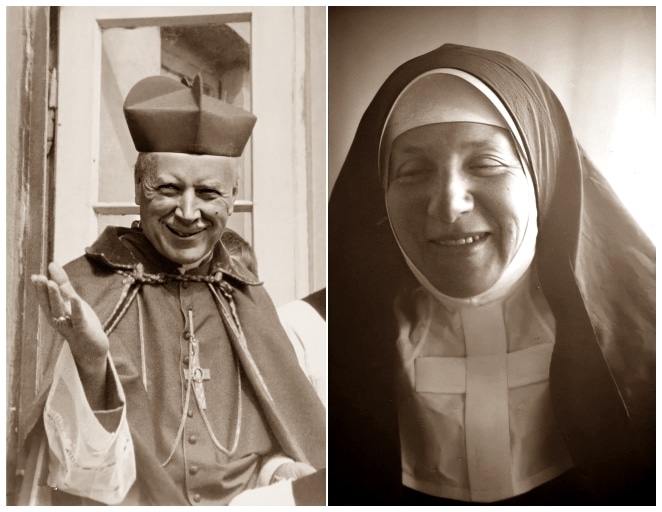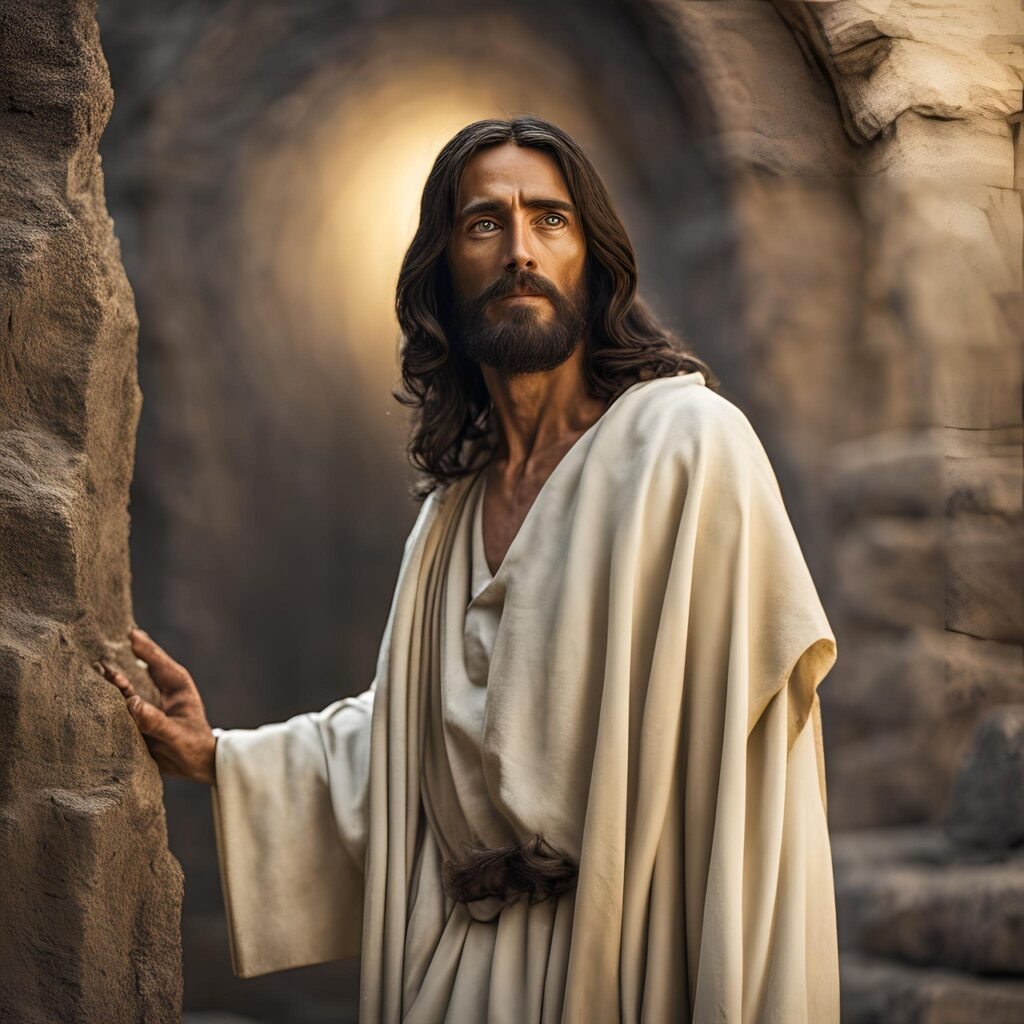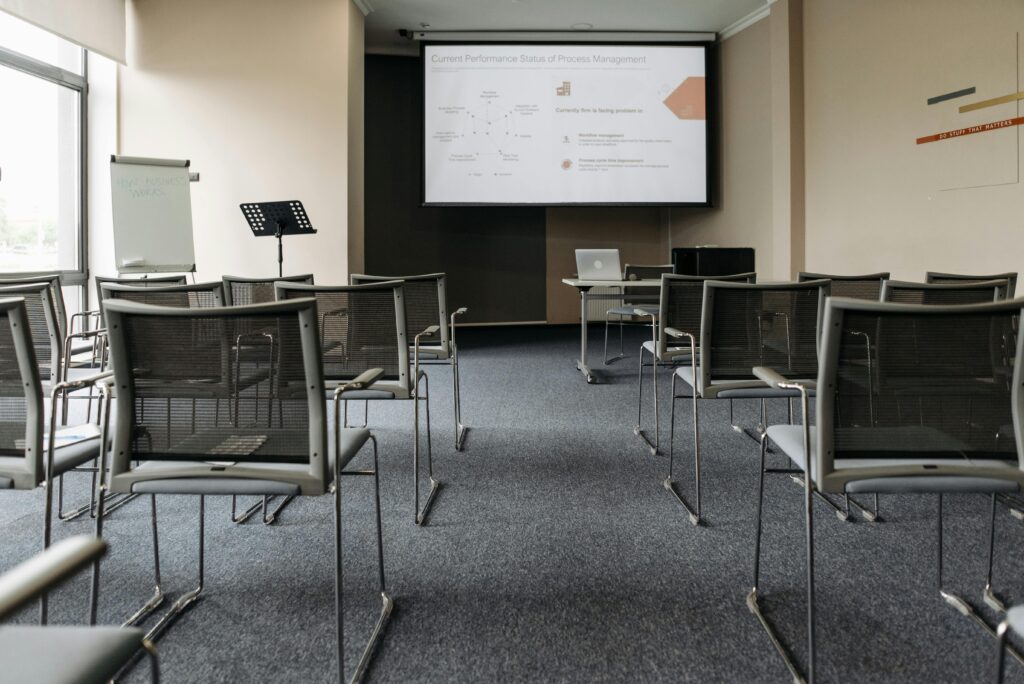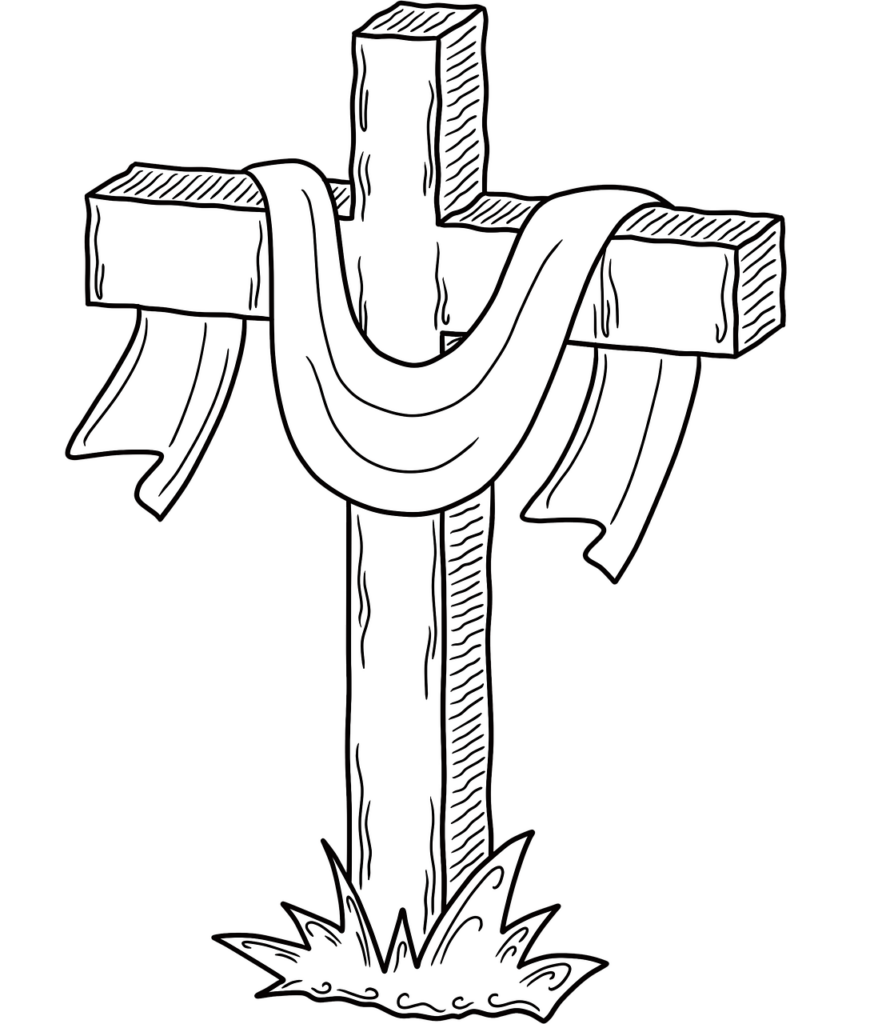Two Poles to be Beatified Sunday, September 12
Cardinal Stefan Wyszyński, Preserver of Faith in Dark Days of Communism, and Mother Elżbieta Róża Czacka, a Blind Nun who Founded the Congregation of Franciscan Sisters Servants of the Cross

On September 12, 2021, two Poles will be raised to the glory of the altars in Warsaw.
One is Cardinal Stefan Wyszyński, the Primate of Poland in the years 1948-1981, the shepherd who saved the faith of Poles in the harsh days of communism. The other is Mother Elżbieta Róża Czacka, a blind nun, the founder of the Congregation of Franciscan Sisters Servants of the Cross, the creator of the Work of Laski, a center for the education of blind children and dialogue with non-believers.
The beatification ceremony in the Warsaw Church of Divine Providence will be officiated by the Prefect of the Congregation for the Causes of Saints, Cardinal Marcello Semeraro, while brief biographies of the new Blesseds will be presented by the Metropolitan Archbishop of Warsaw, Cardinal Kazimierz Nycz.

As a young priest, even before the Second World War, Cardinal Stefan Wyszyński (b. 1901) made a name for himself as an eminent social activist, expert in Catholic social teaching, founder of the Christian Workers’ University in Włocławek, and publisher of Ateneum Kapłańskie, a periodical of a very high standard. On account of these accomplishments, Pius XII appointed him Bishop of Lublin in 1946.
In November 1948, Wyszyński was appointed Primate of Poland, Metropolitan of Gniezno and Warsaw. Apart from holding the office of Chairman of the Bishops’ Conference, he was a Papal Legate (in the absence of the Nuncio) and had special powers which he received from the Holy See, following in the footsteps of his predecessor, Cardinal August Hlond, who had died in 1948. These enabled Wyszyński to exercise jurisdiction over the post-German territories granted to Poland and to care for Catholics in the Soviet Union. In January 1953, he was made a cardinal.
Imprisonment despite a flexible approach
In the face of increasingly tense relations with the communist regime, Primate Wyszyński decided in April 1950 to sign an “Agreement” with the government. The Holy See saw it as a negative development as it considered the document too conciliatory. By signing it, the Primate wanted to protect the Church in Poland from a scathing attack of the communists, as was the case in the other countries of the socialist block. Thanks to this flexible position, the Church in Poland was saved in the most difficult, Stalinist period. However, in the face of the communists’ attempt to take control over appointments in the Church, he voiced steadfast opposition with the words: Non possumus! This led to his arrest on September 25, 1953. Without an indictment, trial or sentence, he was interned in a number of places of detention for over three years, until October 28, 1956.
Struggle for the moral renewal of the nation, a victorious confrontation with the regime
Cardinal Wyszyński used the period of his imprisonment to develop a program for the moral renewal of the nation. He was convinced that the recovery of national freedom required a moral and spiritual rebirth. The pillars of this program were the entrustment of society to the Mother of God (the Jasna Góra Vows of the Nation in 1956), and then the program of the Great Novena, a 9-year pastoral agenda, and prayer before the millennium of the Baptism of Poland in 1966. The Novena was accompanied by a pilgrimage of a copy of the image of the Black Madonna through all Polish dioceses, which involved mass religious gatherings; these often provoked confrontation with the authorities.

As a result of these gatherings of thousands of people, later also a feature of the celebrations of the 1000th anniversary of the Baptism of Poland, Poles experienced a sense of freedom they were unable to find outside the Church. As a result, the Church became an increasingly strong authority and an informal guide for the nation. This resulted in a deepening of religiosity, not only among the people but also among the intelligentsia. The confrontation between the Church and the atheistic regime proved victorious for the Church, a unique development in Europe of the time.
Moreover, Cardinal Wyszynski helped the Catholic Church in the USSR to survive. He secretly ordained priests working there and provided them with assistance. It was thanks to his care that the Greek Catholic Church, which had been dissolved and brutally persecuted in Stalin’s state, survived in Poland.
A wise introduction of Vaticanum II
Cardinal Wyszyński’s other accomplishment was the prudent and peaceful introduction of the Council’s liturgical renewal, which did not lead to the “secularization” characteristic of many Churches in the West. Cardinal Wyszyński himself took an active part in the work of the Second Vatican Council, participating in all of its four sessions. Paul VI appointed him a member of the Council’s presidium, and on the initiative of the Polish bishops, among others, the Pope proclaimed The Blessed Virgin Mary the Mother of the Church.
Polish-German reconciliation
Internationally, Cardinal Wyszyński was one of the fathers of the post-War Polish-German reconciliation, initiated by the famous 1965 letter from the Polish bishops to the German bishops.
The Cardinal’s spirituality
One of the most characteristic features of Cardinal Wyszyński’s spirituality was his devotion to the Blessed Virgin Mary, which had a strongly Christological character. This was expressed, among other things, through his frequently repeated motto: Soli Deo per Mariam. He took the idea of “slavery to the Blessed Virgin Mary” from the French mystic St. Louis Grignion de Montfort, personally entrusting himself to Mary while still imprisoned. The crowning achievement of this concept was the consecration of the whole of Poland into the maternal slavery to Mary for the freedom of the Church in the homeland and in the world, which took place on Jasna Góra on May 3, 1966. The celebration was linked to the anniversary of the Millennium of the Baptism of Poland and was attended by nearly a million believers.
Another characteristic feature of Cardinal Wyszyński was his readiness to forgive even his persecutors. After the death of Bolesław Bierut, the communist president and persecutor of the Church, Wyszyński immediately celebrated Holy Mass for his soul in his private chapel. In his last will and testament, he wrote as follows: “I consider it a grace to myself that I was able to bear witness to the truth as a political prisoner through a three-year imprisonment and that I was spared the hatred of my compatriots holding power in the state. Conscious of the injustices done to me, I forgive them from my heart all the slanders with which they have honored me”.
He had great respect for everyone, especially women, which was rare in the Church at the time. Whenever a woman entered his office, even a cleaner, he would stand up to pay her respect. He showed the importance of family values. He was a defender of life and considered abortion to be one of the most lethal scourges. He was also a consistent defender of human rights in opposition to oppressive regimes.
A prudent support of Solidarity

When strikes started on the Baltic Sea coast in August 1980, he appealed for prudence in fear of Soviet intervention, while at the same time supporting the strikers’ demands. He supported the emerging Solidarity Independent Self-Governing Trade Union while at the same time appealing to its leaders to be responsible.
He died on May 28, 1981. His funeral, attended by the Secretary of State of the Holy See, Cardinal Agostino Casaroli (in lieu of John Paul II, in hospital after an assassination attempt) and representatives of numerous Episcopal Conferences, was a great demonstration attended by several hundred thousand people.
The path to beatification
The beatification process of Cardinal Wyszyński at the diocesan stage began on 20 May 1989 and concluded on 6 February 2001. Subsequently, the documents were forwarded to the Congregation for the Causes of Saints. On 18 December 2017, the decree on the heroic virtues of Cardinal Wyszyński was signed by Pope Francis. On 29 November 2018, the Congregation’s medical council declared miraculous healing through the Cardinal’s intercession, and on 2 October 2019 the Holy Father acknowledged this miracle. It was the healing of a 19-year-old girl, a young nun suffering from thyroid cancer. This paved the way to the beatification, which was due to take place on 7 June 2020 but was rescheduled because of the pandemic.
Mother Elżbieta Róża Czacka – the Apostle of the blind and people far away from God
This remarkable woman, having lost her sight at the age of 22, saw her disability as a sign from God. She decided to serve blind people, both those with actual visual impairment and those who were “spiritually blind”. She founded a secular institution to help the visually impaired and later a new Franciscan congregation of women religious. To this day the town of Laski near Warsaw, with a school and educational center for blind children, is the heart of the activities of both institutions. It is a vibrant center of spirituality, open to people in need and to dialogue with non-believers.
The loss of sight – a turning point in life

The Blessed-to-be was born into a well-known and distinguished aristocratic family (as a great-granddaughter of Tadeusz Czacki, founder of the Kremenets High School). She was born on October 22, 1876, in Biała Cerkiew (Bila Tserkva) in the former eastern territories of the Republic of Poland (today Ukraine). Thanks to thorough home education, she was better prepared than her peers to undertake various tasks in life. At the age of 22, after a fall from a horse, she lost her eyesight, frail since her childhood. Her deep faith helped her to accept this tragic event as her personal vocation in life. Following the advice of her ophthalmologist, she decided to become passionately involved in improving the lot of blind people in Poland, who at that time were not being taken care of.
Róża Czacka learned Braille and intensively worked on her own rehabilitation in order to be as independent as possible. For 10 years she gathered experience in centers for the blind in Switzerland, Austria, Germany, and France. In 1908, she opened the first small institutions for blind children and adults in Warsaw and in 1910 founded the Society for the Care of the Blind.
Founder of a religious congregation
At the same time, she was toying with the idea of becoming a nun and of founding a community devoted entirely to the service of the blind. She spent the years 1915-1918 in the eastern territories, where she was trapped by the warfare. It was a time of her personal retreat. She began the novitiate of the Tertiaries, taking up the practice of radical poverty. On
November 19, 1917, she donned a nun’s habit and took her vows, assuming the name Sister Elizabeth of the Cross. The Congregation of Franciscan Sisters Servants of the Cross, which she formally founded, was established in Warsaw on December 1, 1918. The founding of the congregation by a blind countess was met with skepticism on the part of some people, yet it gained the full approval and support of Warsaw Metropolitan Archbishop Aleksander Kakowski. The Foundress was also held in high esteem by the then Apostolic Nuncio Achilles Ratti, later to become Pope Pius XI.
The Work of Laski
In 1921, the Society for the Care of the Blind moved most of its institutions for the blind to Laski, near Warsaw. Before long, the center would become one of the most modern in Central Europe. The community was founded on genuinely Franciscan simplicity and poverty, which spoke directly to the hearts of everyone.
Of great significance for the spirituality of the place was Fr. Władysław Korniłowicz (1884 – 1946), a pioneer of liturgical renewal in Poland, a chaplain of university students, and Warsaw-based intelligentsia, profoundly engaged in dialogue with non-believers. He accepted the role of a spiritual director of the congregation and of the lay collaborators of the Laski community. Thanks to his ministry, Mother Czacka was able to fulfill her wish to involve the sisters and the physically blind not only in expiation for the spiritual blindness of the world but also in active apostolate and service to the “spiritually blind”, that is, to those who were lost and searching for something more profound in their lives.
Father Korniłowicz was instrumental in establishing the Retreat House in Laski, which has continued to host year-round individual and group retreats for people searching for their own life paths and for answers to their innermost problems. Furthermore, Fr. Korniłowicz provided the impetus for the creation of a Library of Religious Studies and the Verbum bookshop and publishing house, which promoted valuable spiritual and philosophical literature. Through his pastoral service, he led both non-believers and followers of other religions to God. The unique spirit of Laski attracted authors such as Zbigniew Herbert, Antoni Słonimski, Zygmunt Kubiak, and Jerzy Liebert.

The Laski community established contacts with prominent representatives of Catholic personalism in Western Europe. In August 1934, one of the attendees of an international Thomistic Congress held in Warsaw was Jacques Maritain, who visited Laski and the premises of the Verbum publishing house. Another eminent Thomist philosopher and theologian, the Swiss Charles Journet, who later became a cardinal, would also visit Laski at that time. He wrote much-telling words about his stay in Laski: “I encountered a truly Franciscan Church, poor to the verge of deprivation, but overflowing with mercy; welcoming with kindness all the miseries of body and soul, and at the same time open to all the pursuits of modern art; full of wonderful respect for the desires of the Pope, but at the same time free from all formalism. It had no hardness or contempt for the Jews but knew how to find the secret of opening to them the gates of Holy Baptism. It knew no falsehood, sincere to the point of exaggeration with the unmistakeably Slavic sincerity, which is both crazy and wonderful…”.
In 1937, Mother Czacka was received in audience by Pope Pius XI, who while an Apostolic Nuncio in Warsaw had offered Mother Foundress valuable advice and guidance. He listened attentively to the account of the development of the Work and blessed it.
Relations with Cardinal Stefan Wyszyński
Mother Czacka met young Fr. Stefan Wyszyński in 1926, who visited Laski accompanying his spiritual director Fr. Władysław Korniłowicz. They were united by a strong spiritual bond. Their cooperation intensified especially during the Second World War. The young priest, a professor, who was hiding from the Gestapo, at first served as a chaplain in the outposts of Laski in the Lublin region (in Kozłówka and Żułów), and in the years 1942-1945 was the chaplain of the Franciscan sisters and the units of the underground Home Army in Laski.
Cardinal Wyszyński’s friendship and spiritual bond with Mother Czacka survived until her death in 1961, which did not put an end to the Primate’s connection with the Laski community.
In December 1948, Mother Czacka suffered her first stroke and in 1950 she stepped down as Mother General of the congregation. The last 10 years of her life were marked by a serious illness and suffering, which she bore and sacrificed for the Work. She lived in a small room adjacent to the chapel in Laski, where she died on 15 May 1961. The sarcophagus in the chapel contains her relics.
On the way to beatification
Recognition of her holiness was widespread. The beatification process began in December 1987 and concluded at the diocesan stage in June 1995. In 2017, Pope Francis approved the decree on the heroic virtues of Mother Czacka, and in October 2020 signed the decree on a miracle through her intercession. This paved the way to beatification.
The miracle occurred in 2010 and was linked to a serious accident of a 10-year-old girl on 29 August. The injuries to the child’s head were so severe that doctors feared that she might die, remain in a vegetative state or suffer serious damage, including the loss of sight and hearing. The girl’s family, parish, and the entire congregation of the Franciscan Sisters Servants of the
Cross prayed for her health through the intercession of Mother Czacka. On September 13, 2010, there was a breakthrough and the girl started to quickly regain her strength. Today she is completely cured.
The Church in Poland in Numbers
Regardless of intense secularisation tendencies, Polish society remains strongly attached to faith and the local Church has enormous apostolic potential, incomparably greater than in many other countries.
Religiousness
91.9 percent of Poles claim to be members of the Catholic Church. In 2019, 32,461,000 believers-members of the Catholic Church in Poland were grouped in 10,382 parishes (9,666 diocesan and 666 led by religious congregations).
In Poland, in spite of strong secularisation tendencies in our cultural environment, compared to other European countries, the religiousness indicators are decreasing slowly; sociologists call this “creeping secularisation”. In 1990, 50.3 percent of those obliged attended Sunday Mass; in 2013 this percentage fell to 39.1 percent, and in 2019 to 36.9 percent (latest survey).
According to the Institute of Statistics of the Catholic Church, about 11 percent of people claim to be deeply religious. Women are more likely to believe, with 14.4 percent deeply religious and 70.3 percent religious, while men are 7.6 percent deeply religious and 68.8 percent plain religious.
Apostolic structures and resources
The Church in Poland consists of 15 metropolises composed of 45 dioceses, including three belonging to the Byzantine-Ukrainian Rite Church; there is also a Military Diocese. One-third of Poland’s 154 bishops are retired. There are 44 diocesan bishops and 55 auxiliary ones. An average bishop is 66 years old, comes from a village or a small town, and has a doctorate in theology. The average age of an auxiliary bishop is 59 and that of a diocesan bishop is 64.
Poland has 33,600 priests: 24,700 diocesan ones and 8,900 religious priests. There are also 1,200 brothers and about 19,000 religious sisters. Such a high number of priests is the effect of the “vocation boom” from the time of John Paul II. At present, there are half fewer candidates to the priesthood.
Consecrated life
Female religious congregations
In Poland, there are 104 active and 13 contemplative congregations. Over 17,000 sisters live in active congregations and 1,270 are contemplative nuns. Religious sisters run 109 Caritas Centres, 45 volunteer groups, and 39 prison ministry groups. The nuns also evangelize through the media: on the radio, on television, or online. They run 6 publishing houses, 500 websites, and 400 accounts on Facebook and Twitter.
Male religious congregations
Poland has 11,173 men religious, members of 59 congregations. The most numerous of these are Franciscans (1,233), Salesians (992), Conventual Franciscans (926), Pallottines (592), Jesuits (586), Dominicans (439), and Redemptorists (413).
Male institutes of consecrated life run 708 parishes, 174 shrines, 111 independent rectorates and vicariates, and 453 other churches and chapels. Men religious are bishops (40), parish priests, vicars, exorcists, hospital chaplains, spiritual directors and chaplains of religious sisters, student chaplains, spiritual ministers of religious movements and associations, and directors of many special groups of the faithful. The religious orders run their own educational institutions: 14 nurseries, 44 primary schools, 45 secondary schools, 8 vocational schools, 8 technical schools, 10 colleges, and 97 oratories for children and young people. Each year, they hold more than 1,700 residential trips for nearly 30,000 children and over 100,000 young people.
Charitable work
The Catholic Church is the second largest organization in Poland (after the state) that provides assistance to the needy. Charitable work is carried out on several levels, in diocesan institutions, religious orders, parish communities, movements, associations, and foundations. Caritas Polska and 45 diocesan Caritas units are the largest charitable organizations in Poland. They are in charge of a few thousand centers that assist the most vulnerable members of society.
Charity work is carried out in a vast majority of Polish parishes by as many as 3,250 parish Caritas units and a number of parish organizations and communities.
Congregations of women religious are in charge of 72 children’s homes, including 13 family-run children’s homes, 112 social welfare homes for children, young people, and adults, 28 nursing homes, 5 institutions providing 24-hour care for the disabled, 10 homes for mothers with small children, 2 shelters for the homeless and 2 homes for those recovering from homelessness, 25 soup kitchens for the poor, and 95 food distribution sites. The services provided by women’s religious orders in Poland also include more than 30 nursing homes, 2 hospitals, 25 doctors’ surgeries, 6 rehabilitation centers, 3 hospices, 38 windows of life, 65 retreat centers, and 57 recreational homes for laypeople.
As part of their charitable activities, male religious orders run 7 hospitals, 12 hospices, 9 clinics, and health centers, 27 nursing homes, 8 youth education centers, 14 therapy centers for addicts, and 9 shelters or night shelters for the homeless. Many charity centers are located at parishes and religious communities, including e.g. 69 psychological and educational counseling centers, 112 day-care centers for children, 50 soup kitchens, 28 family assistance centers, and 28 occupational therapy workshops.
The laity
A 2018 study showed that about 8 percent of Polish Catholics are so-called committed believers. The Catholic movements, communities, and associations of the laity present in Poland are very diverse. Some communities, such as the secular Franciscan, Dominican or Carmelite communities, have existed for centuries. The Living Rosary, established in the late 19th c., is one of the most numerous and oldest lay communities in Poland.
There are also contemporary movements and communities that have been transplanted to Poland from abroad: Renewal in the Holy Spirit, Neocatechumenal Way, Legion of Mary, Prelature of the Holy Cross, Opus Dei, and the Faith and Light Movement.
Native Polish new communities include Ruch Światło-Życie (Light-Life Movement, known as the Oasis), Domowy Kościół (Home Church), Spotkania Małżeńskie (Encounters of Married People), Przymierze Rodzin (Family Alliance), and Rodzina Rodzin (Family of Families). Of major importance among the re-established pre-war structures of the laity is Catholic Action, focused in particular on social activities, and the Catholic Youth Association.
Clubs for Catholic Intelligentsia play an important role among the elites.
According to a study by the Institute of Statistics of the Catholic Church, the 65,500 more or less formal organizations affiliated with parishes have a membership of 2,570,000 people. Of these, 61 percent care for children or young people, 54 percent for the elderly, 32 percent for the poor, 24 percent for persons with disabilities, 14 percent for the unemployed, and 14 percent assist victims of violence.
Pilgrimage movement
Poles are a nation that values pilgrimages. Before the pandemic, about 7 million Poles annually embarked on pilgrimages to various places in Poland and abroad. There are 1,050 shrines in Poland: 793 Marian ones, 126 shrines of the Lord, and 131 ones connected with the saints. About 500 of them are regular pilgrimage destinations. The most important shrine in the country is Jasna Góra. In 2019, it was visited by 4,400,000 pilgrims, including 133,000 arriving at the shrine of Our Lady on foot. Other most visited shrines include the Divine Mercy Shrine in Krakow Łagiewniki, which annually attracts around 2 million people from 90 countries. The other most visited sanctuaries are the Sanctuary of Our Lady of Fatima in Krzeptówki, Kalwaria Zebrzydowska, and Licheń, attracting ca. 1 million pilgrims each year.
Missions
The ad gentes missions in traditional missionary countries are served by 1,883 Polish missionaries. Among them, there are 303 diocesan priests, 879 religious, 662 nuns, and 39 lay missionaries. They work in 99 countries on 5 continents. There are also 197 diocesan and 367 religious priests, 37 brothers, and 213 sisters from Poland working in the former USSR.
Catholic Media
At present, the Catholic community in Poland has 5 nationwide weeklies: Gość Niedzielny, Niedziela, Tygodnik Powszechny, Przewodnik Katolicki, and Idziemy, 44 radio stations along with a nationwide Radio Maryja owned by the Redemptorists, Catholic divisions in public media in Polish Radio and Polish Television and a private Telewizja Trwam. Catholic websites are the fastest-developing media outlets, especially at the time of the pandemic. The most influential ones are e.g. the Jesuit DEON.PL (5 million users), OPOKA.PL (ca. one million users) and ALETEIA.PL (ca. one million users).
Poland’s Catholic News Agency, servicing both Catholic media and the laity, plays a special role at the national level.
Catholic Higher Education Institutions
The Church in Poland runs 2 universities: John Paul II Catholic University of Lublin and John Paul II Pontifical University of Krakow. There are moreover 3 HEIs with the status of pontifical universities: the Catholic Academy in Warsaw, Ignatianum Jesuit University in Krakow, and the Pontifical Faculty of Theology in Wrocław. Cardinal Stefan Wyszyński University in Warsaw has the status of a state university. There are also theological faculties at six state universities: in Katowice, Poznań, Toruń, Opole, Olsztyn, and Szczecin.
Catholic schools
There are 487 Catholic schools in Poland. According to the latest data (as of September 2019), there are 259 primary schools, 140 general secondary schools, 16 technical secondary schools, 7 first degree industry schools, 10 art schools, and 55 special schools.
Catholic schools have over 70,000 students, including over 44,100 primary school pupils (1.5% of the total number of pupils in primary schools in Poland) and over 21,200 secondary school pupils (4.5% of the total number of pupils in schools of this type). Nearly 2,000 students attend Catholic technical schools and first-level vocational schools; there are over 500 students in art schools and approximately 2,500 students in special schools.
Prevention of sexual abuse
Crimes of pedophilia and abuse of minors are a serious social problem in Poland, not only in the Church. According to a report published by the Dajemy Dzieciom Siłę Foundation, 12.4 percent of children and young people between the ages of 11 and 17 have experienced at least one form of sexual abuse.
Every year, state courts convict an average of 1,356 people for crimes of sexual abuse of minors. According to data from the Central Database of Persons Deprived of Liberty as of December 2020: “this sentence is currently being served by 1,073 convicts, including 3 Roman Catholic clergy”.
As for the scale of these crimes committed by clergy, in light of the data collected by the Secretariat of the Polish Bishops’ Conference and published by the Institute of Statistics of the Catholic Church, between 1990 and 2020, 750 reports of sexual abuse of minors by clergy were recorded in Poland, including 584 in dioceses and 166 in religious orders. These cases relate to the period since 1958.
The Church is aware of this problem and for the past 10 years has been trying to build its own system for the protection of children and young people, in line with the indications of the Holy See. For several years now, Archbishop Wojciech Polak has been coordinating activities in this field as the Delegate of the Polish Bishops’ Conference for the Protection of Children and Young People. Substantive assistance in this area is provided by the Child Protection Centre at the Ignatianum Jesuit University in Krakow. Each diocese and male congregation has appointed a delegate for the protection of children and young people; they collect reports of abuse and assist the victims; special prevention programs have been put in place. In autumn 2019, the Polish Bishops’ Conference set up the Saint Joseph’s Foundation, tasked with providing various types of assistance, mainly therapy, to victims of sexual abuse.
The most recent element of a system being built is the application in Poland of the motu proprio Vos estis lux mundi, establishing procedural norms to combat sexual abuse and ensure that bishops and religious superiors are held accountable for concealing crimes of sexual abuse of minors. Under this legal instrument, 2 bishops have been forced to resign and 5 others have been sanctioned.
The text is based on Kościół w Polsce – Raport (The Church in Poland – a Report), Poland’s Catholic News Agency, Warsaw 2021
Related

After Eight Days Jesus Arrived: Commentary by Fr. Jorge Miró
Jorge Miró
26 April, 2025
3 min

The Perspectivas del Trabajo Foundation is founded with the aim of promoting virtues for professional development
Exaudi Staff
25 April, 2025
2 min

Reflection by Bishop Enrique Díaz: Alleluia, alleluia
Enrique Díaz
20 April, 2025
5 min

Christ is Risen! Alleluia! Commentary by Fr. Jorge Miró
Jorge Miró
20 April, 2025
3 min
 (EN)
(EN)
 (ES)
(ES)
 (IT)
(IT)

